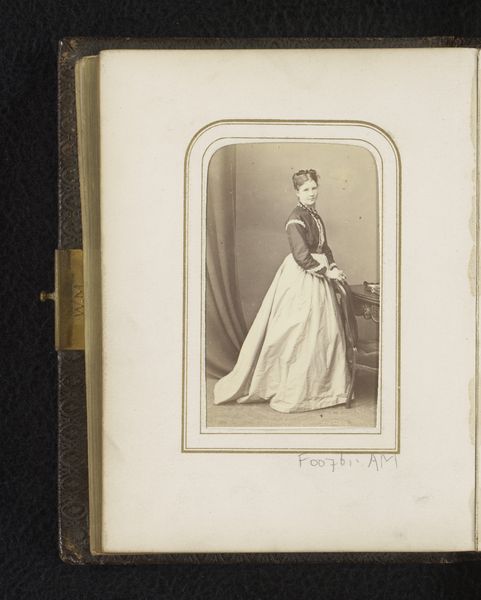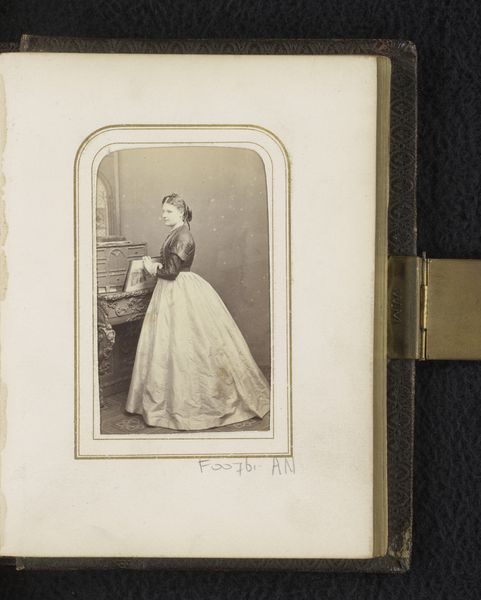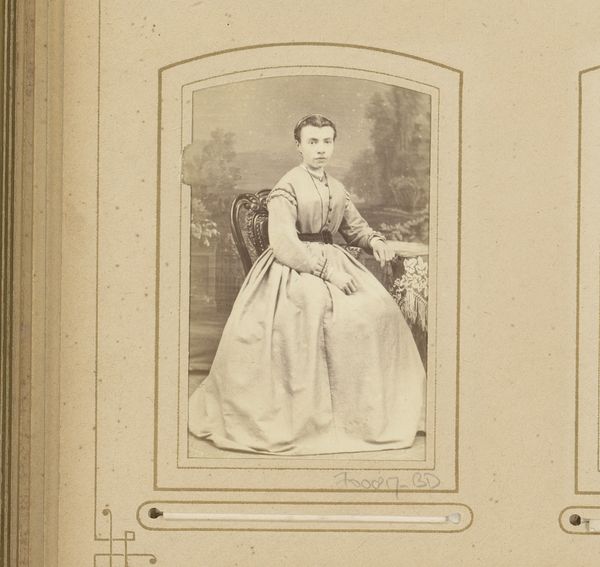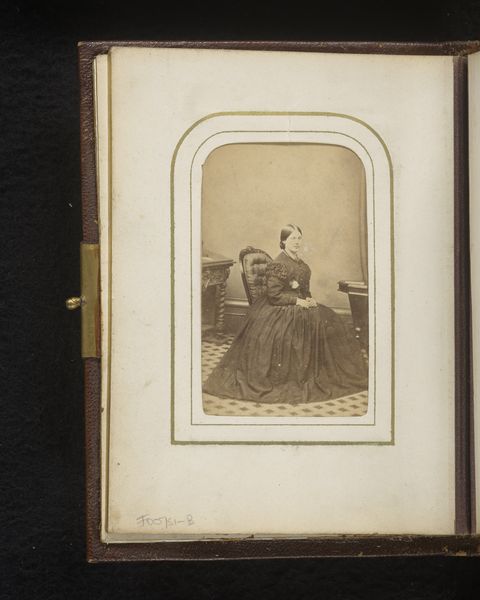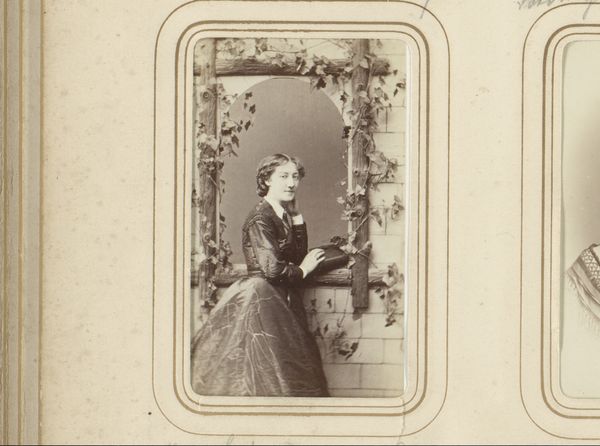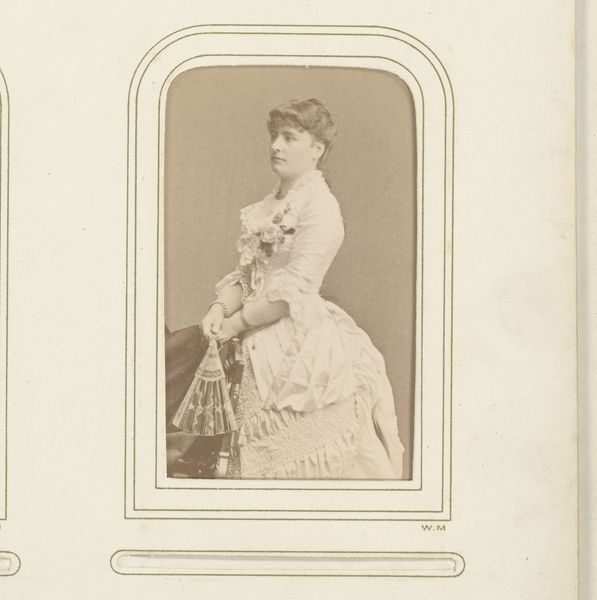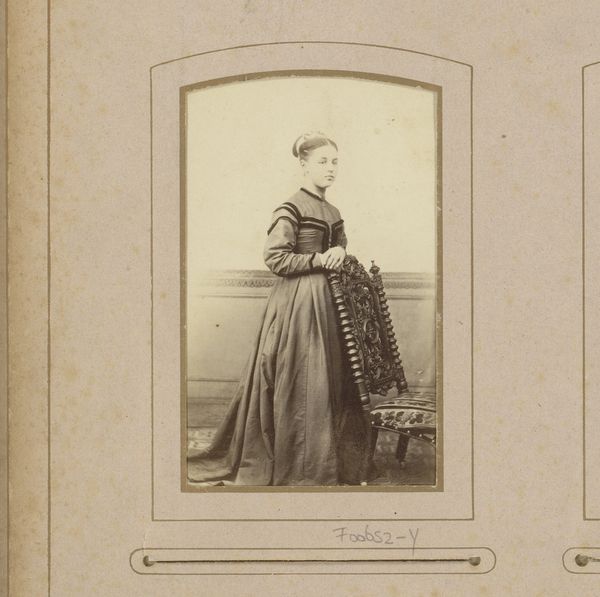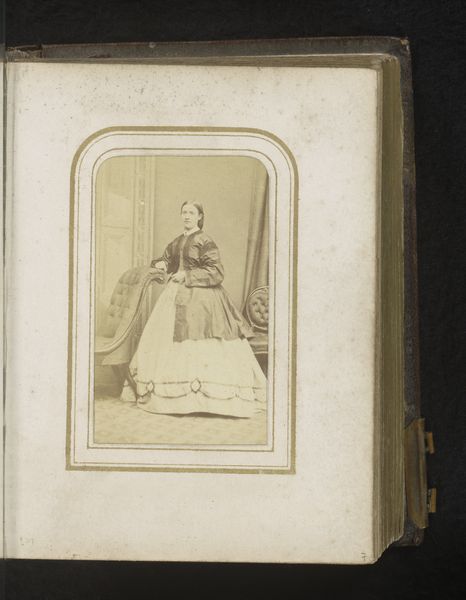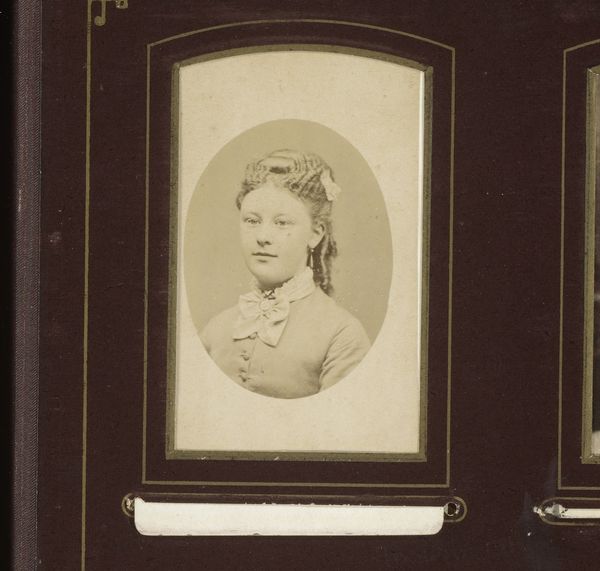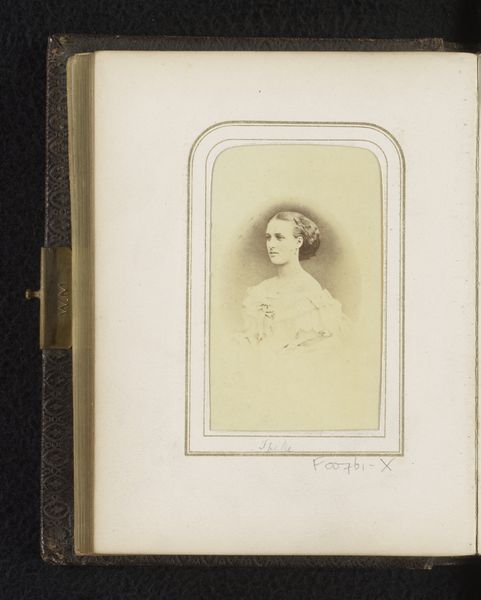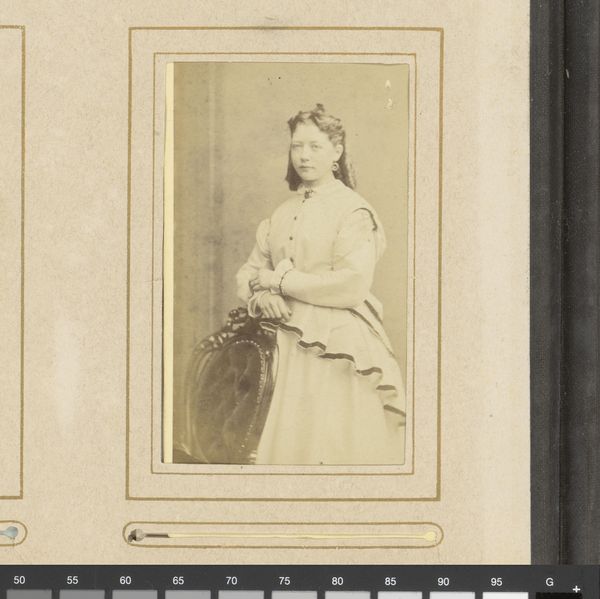
Portret van een vrouw bij een balustrade, met paraplu in de hand 1861 - 1874
0:00
0:00
photography
#
portrait
#
photography
#
19th century
#
genre-painting
Dimensions: height 82 mm, width 50 mm
Copyright: Rijks Museum: Open Domain
Editor: Here we have "Portret van een vrouw bij een balustrade, met paraplu in de hand," a photograph taken sometime between 1861 and 1874. The artist is Albert Greiner, and it's currently housed in the Rijksmuseum. The tones are muted, giving it a certain nostalgic feel. What stands out to you most about this portrait? Curator: For me, it's about understanding the mechanics of image production during that period. Think about the time and resources that would've gone into this single image. The photographer, the studio, the developing process…all relatively novel technologies. We can analyze it as a commodity: a physical object signifying social standing and access. Editor: So, less about the sitter and more about the process of photography itself? Curator: Precisely. Consider the material components: the paper, the chemicals, the lens. These are the elements that capture and fix the image. Her fashionable dress—all those yards of fabric—signals access to clothing manufacture and the textile trade. These were significant aspects of 19th-century labor and capitalism. Even the paraplu represents industrial progress! Editor: I hadn’t considered the industrial aspect of it. Does this approach take away from the artistry or the subject’s individual story? Curator: Not at all. It situates the work within a broader socioeconomic context, providing a different lens through which we can interpret the subject and the photographer's intention. It expands the dialogue beyond simple aesthetics. It allows for us to have a conversation on labor and materiality, using this portrait as our evidence. Editor: That's a really interesting way to look at it. I'm now thinking about how advancements in material processes changed how people viewed themselves and their place in society. Thanks for showing me that! Curator: My pleasure! I think we have to question these boundaries in our examination and deconstruction of historical images.
Comments
No comments
Be the first to comment and join the conversation on the ultimate creative platform.
